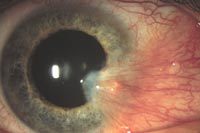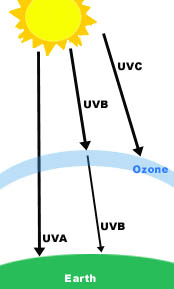Ultraviolet (UV) radiation comes from direct sunlight and reflected sunlight. The direct exposure is more intense at higher altitudes and between 9 and 3 during the summer. Reflected light accounts for 50% of UV radiation and is most intense from snow, water and sand.
Children’s eyes are particularly susceptible to damage from sun:
- Children spend more time outdoors. In fact they receive 80% of their lifetime UV exposure before the age of 20 years.
- More UV radiation is transmitted through the young crystalline lens to the retina. The tissues are clear and don’t block as much light.

Most children don’t experience photophobia or sensitivity to light. Wearing sunglasses needs to be a habit just like riding in a car seat or wearing a bike helmet. Children don’t want to wear a helmet, but it is required, just as sunglasses should be required. The use of good UV blocking sunglasses prevents cumulative damage to the eyes.

